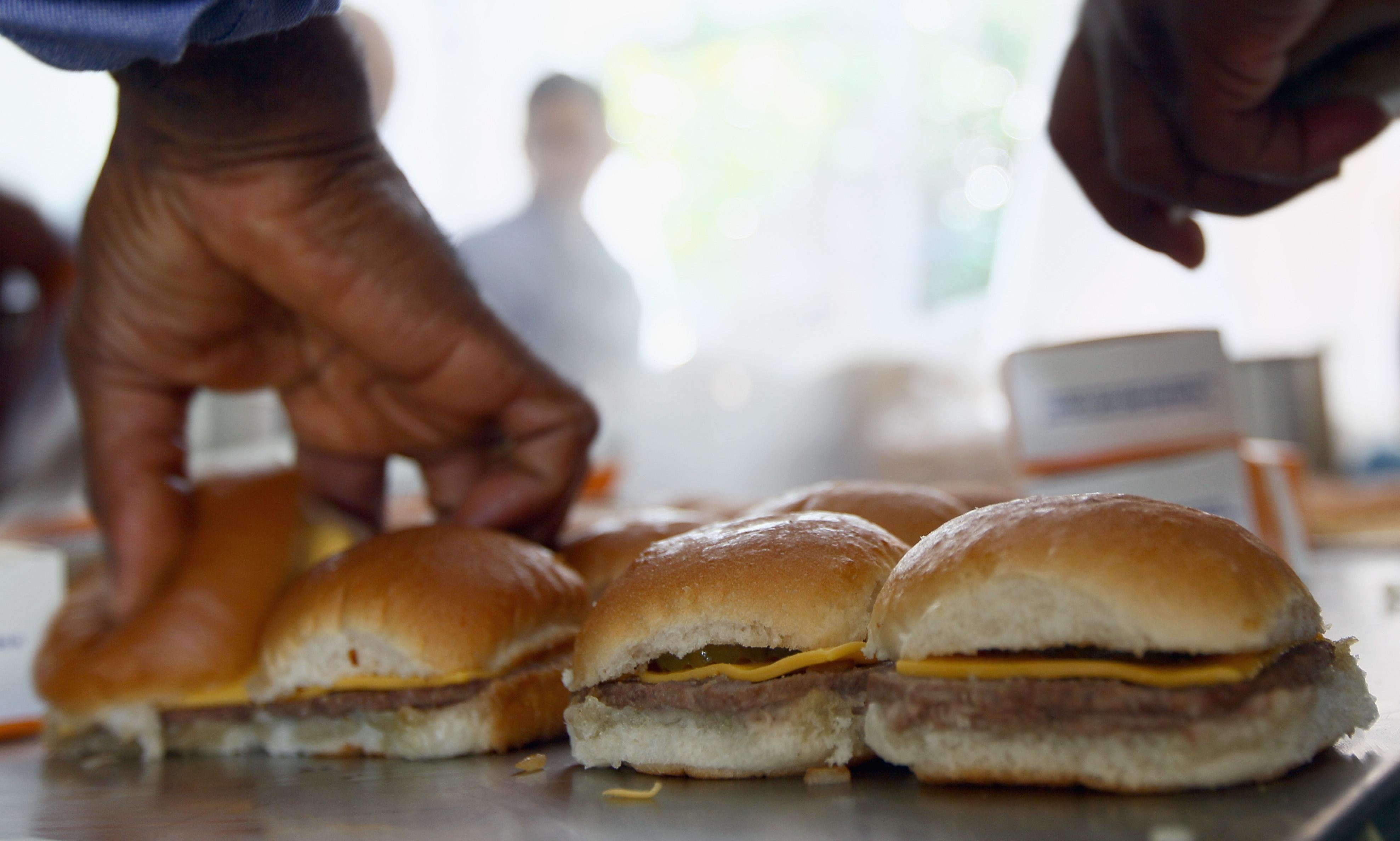Economists love hamburgers. Specifically fast-food burgers. This is partly because all right-thinking human beings love ground meat on a bun, but it’s also because the sandwich makes a handy yardstick for international financial comparisons. The ingredients and labor involved in preparing a Big Mac are pretty much the same no matter where you are in the world, so by looking at how many hours of toiling it takes a worker to earn enough to purchase one, you can get a sense of how wages really stack up across countries. The Economist famously created the Big Mac index in 1986 to see which currencies were overvalued. It started as a joke. Now, as the magazine proudly notes, it’s a subject of academic study.
Sadly, I don’t think the Wall Street Journal’s cheeky “White Castle Minimum Wage Index” is destined for the same longevity. The paper looked at how many delicious steamed sliders (and don’t get me wrong, they are delicious) the minimum wage has been able to purchase over time. The point is that as it notes, in 1981, the $3.35 minimum could buy a whole dozen. Today, at $7.25, it could purchase just 10. This is supposed to illustrate “the dilemma caused by raising the minimum wage”—namely, that it leads fast-food chains and other low-wage employers to raise prices. When the federal minimum jumped about 24 percent between 2007 and 2009, burger prices popped up by the same.

Graph: WSJ
Which is fair enough. Economists have regularly found that the minimum wage impacts fast-food prices, which, as the WSJ notes, makes sense because the industry is so reliant on unskilled labor. But two big problems. First, when I look at this chart, I mostly see the effects of steady inflation on burger prices post-1980 (presumably, they didn’t only rise when labor costs went up). Second, if the goal is to capture broader living standards, it doesn’t make much sense to measure the value of the minimum wage over time using the price of a single product that’s so closely tied to it. The Big Mac is a great tool for geographical comparisons, because its production is so standardized across countries. You don’t need to control for those same cross-border differences when you look at wages and living standards in a single country over time. Better to just use inflation.
If you are going to use a single expense to measure living standards, though, you’re probably better off using something major like rent. As far as I know, nobody actually counts White Castle Burgers as a major line item in their monthly budget. Tasty as they might be.
